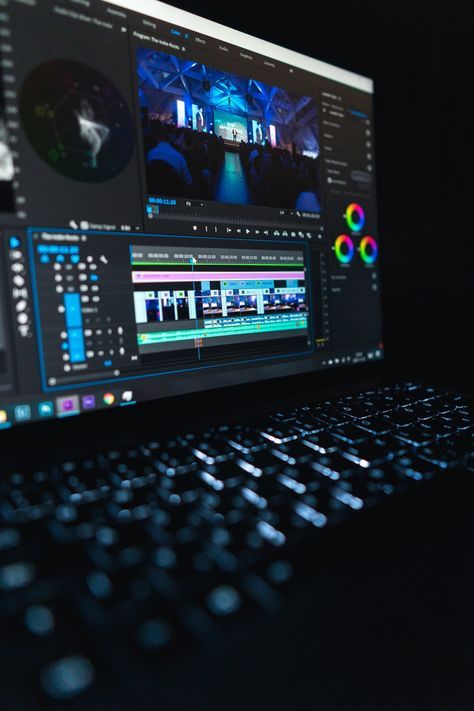Top Graphic Design Software: Revolutionizing Creativity and Design in the Modern Era
Introduction
Graphic Design Software has evolved significantly in the digital age, enabling designers to unleash their creativity and deliver stunning visuals with ease. From marketing materials to digital art, the power of graphic design software has transformed the way we approach design. Whether you’re a professional designer or a hobbyist, the right tools are essential for bringing ideas to life and producing exceptional designs. In this article, we’ll explore the top graphic design software that are making waves in the industry, providing useful insights into their features, impact on daily life, and significance in society.
1. Adobe Photoshop: The Industry Standard for Graphic Design
Adobe Photoshop is the most well-known and widely used graphic design software in the world. Renowned for its powerful features, Photoshop is the go-to tool for image editing, digital painting, and creating complex visual compositions. Whether you’re working on photo manipulation, web design, or creating textures for 3D models, Photoshop offers a broad range of capabilities to meet the needs of any designer.
Impact on Daily Life:
For individuals, Photoshop is invaluable in daily life for tasks such as editing family photos, creating social media graphics, or designing personal artwork. For professionals, it streamlines workflow, making it possible to work on high-resolution projects without compromising quality.
Significance:
As the industry standard for graphic design, Photoshop’s influence on the creative world is undeniable. Its versatility and unmatched features allow designers to push the boundaries of their craft, making it essential in various creative industries, including advertising, digital marketing, and photography.
2. Adobe Illustrator: Vector Graphics at Its Best
Adobe Illustrator is another powerhouse in the design world, especially for those focused on creating vector-based artwork. Vector graphics are essential for logos, illustrations, and print designs, as they are scalable without losing quality. Illustrator allows designers to create intricate designs with precision, whether it’s a logo, an infographic, or a typography-based design.
Impact on Daily Life:
Illustrator is perfect for personal projects like designing custom invitations, logos for a small business, or even t-shirt graphics. For professionals, it’s indispensable when working on brand identity, packaging design, or web design. The software’s ability to handle both simple and complex designs makes it adaptable to a variety of needs.
Significance:
Illustrator is the go-to tool for creating vector-based graphics, and its ability to scale artwork seamlessly without losing clarity makes it critical for branding, advertising, and print design. As a result, it’s become essential for designers working in any creative field that involves logos, illustrations, or graphic art.
3. CorelDRAW: Intuitive Design for All Skill Levels
CorelDRAW is a graphic design software that caters to both beginners and professionals. Known for its user-friendly interface and robust features, CorelDRAW offers an intuitive platform for creating vector illustrations, page layouts, and logos. It’s a great choice for those who want to dive into graphic design without a steep learning curve.
Impact on Daily Life:
CorelDRAW simplifies the design process, allowing users to create professional-quality designs with ease. It’s particularly useful for entrepreneurs and small businesses looking to create their own logos, marketing materials, or website graphics without the need to hire a professional designer.
Significance:
CorelDRAW has made its mark in the design community by offering a more accessible and affordable option compared to other high-end software like Adobe Illustrator. It allows graphic designers to produce high-quality work without requiring advanced technical skills, democratizing access to design tools.
4. Canva: Simplified Graphic Design for Everyone
Canva has emerged as one of the most popular graphic design tools for non-designers. With its drag-and-drop interface and an extensive library of templates, fonts, and images, Canva empowers anyone to create professional-quality designs quickly and easily. Whether you’re designing a social media post, a flyer, or a presentation, Canva makes graphic design accessible to all.
Impact on Daily Life:
For everyday users, Canva has become a go-to tool for creating personalized greeting cards, business presentations, or digital art for social media. It’s perfect for individuals who need to design without the complexity of professional software. For businesses, it’s a quick and efficient way to create marketing content on the fly.
Significance:
Canva has revolutionized graphic design by making it accessible to people with little to no design experience. Its user-friendly interface and abundance of templates and resources have made it a go-to tool for small businesses, marketers, and social media influencers, ensuring high-quality visuals even without professional design skills.
5. Affinity Designer: Affordable Alternative for Professional Design
Affinity Designer is a professional graphic design software that rivals Adobe Illustrator, offering many of the same vector design features at a fraction of the cost. Whether you’re creating illustrations, logos, or web designs, Affinity Designer’s powerful tools provide the precision and flexibility needed for professional-grade design work.
Impact on Daily Life:
For individuals, Affinity Designer provides an affordable entry point into graphic design without sacrificing functionality. It’s ideal for personal projects like digital artwork, as well as professional work such as branding or print design. Its sleek interface and advanced features make it appealing for both hobbyists and full-time designers.
Significance:
Affinity Designer has gained popularity among professional designers who seek high-quality graphic design software without the subscription-based pricing model of Adobe. Its versatility and affordable one-time purchase price make it an excellent alternative for both beginners and seasoned professionals.
Conclusion
Graphic design has become an integral part of daily life, shaping how we communicate visually and making an impact across various industries. The tools discussed above—Adobe Photoshop, Adobe Illustrator, CorelDRAW, Canva, and Affinity Designer—have revolutionized the creative process, empowering designers and non-designers alike to create powerful visuals that resonate with audiences.
The Impact on Society
Graphic design plays a crucial role in society by influencing branding, advertising, education, and entertainment. It helps businesses establish their identity, creates meaningful experiences for consumers, and enhances communication through visual storytelling. The rise of user-friendly tools like Canva and CorelDRAW has democratized the creative process, allowing anyone to participate in the world of design and share their creativity with the world.
The Significance of Graphic Design Software
In a world where visuals dominate, graphic design software serves as the foundation for creating compelling, professional-quality designs. These tools not only boost creativity but also foster collaboration, innovation, and self-expression. Whether for personal, professional, or commercial use, graphic design software has become a significant part of how we communicate visually and emotionally in the modern world.
Wishing
For those venturing into the world of graphic design, the right software can be the key to unlocking limitless creativity. Whether you are an aspiring designer or simply want to enhance your visual communication skills, these top graphic design software tools will guide you every step of the way.











This website allows you to hire experts for occasional hazardous missions.
Users can efficiently request assistance for particular requirements.
Each professional have expertise in dealing with critical operations.
rent a killer
The website provides discreet connections between requesters and specialists.
When you need urgent assistance, our service is the perfect place.
List your task and connect with the right person today!